How to Make Slime - Elmer's Glue Recipes
Expert slime makers agree that Elmer’s glue makes the best DIY slime. However, there are some tricky variations that can turn your slime from just […]
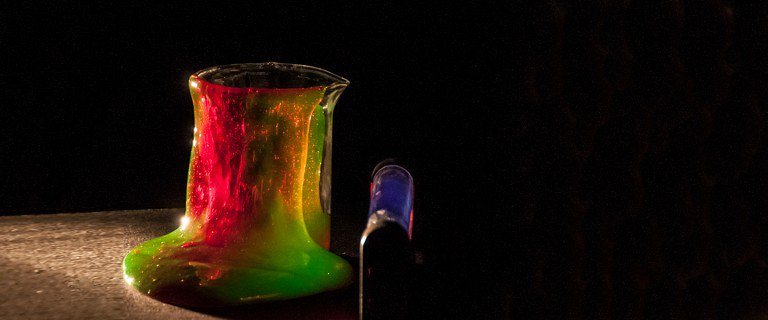
When you mix Vampire Slime Goo and Cross-Linker, it appears to be normal green slime, but hold the oozing blob up to a source of light and… GASP! The slime turns a blood-red. Turn off the lights and grab a black light – Vampire Slime is fluorescent and glows under ultraviolet light.
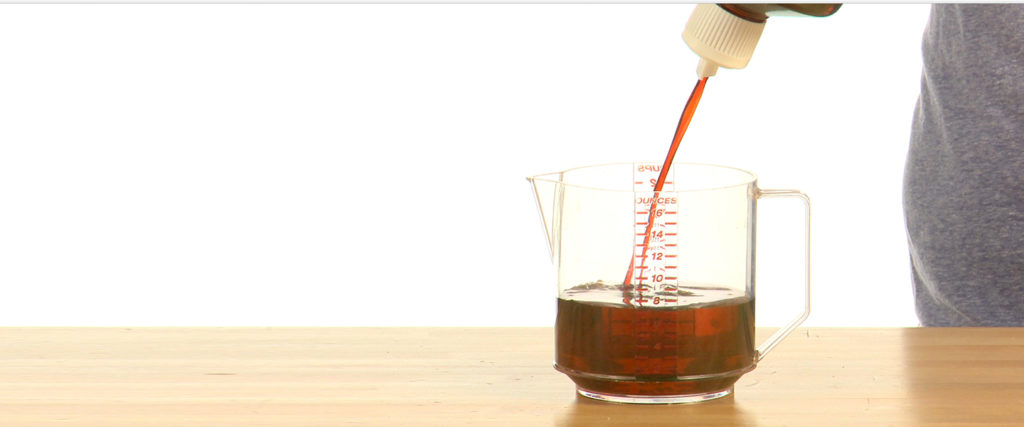
Measure 8 oz (236 mL) of the Vampire Slime Goo and pour the goo into your small bowl.
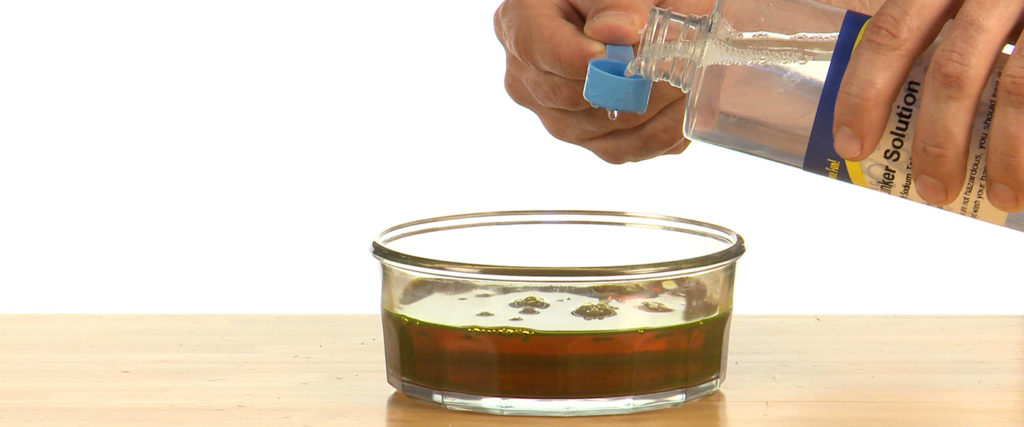
Add 4 Tablespoons of the Cross-Linker Solution into the slime.
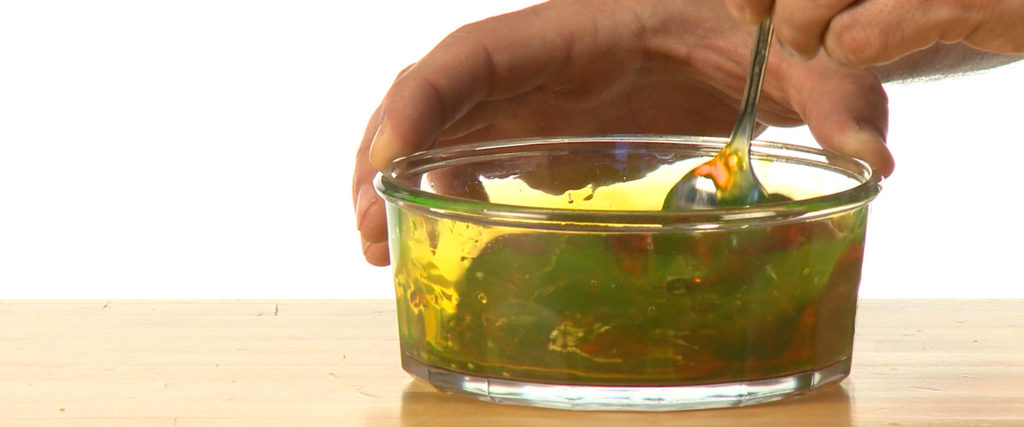
Stir together your mixture! And keep on stirring until it thickens into a slimey-gooepy consistency.
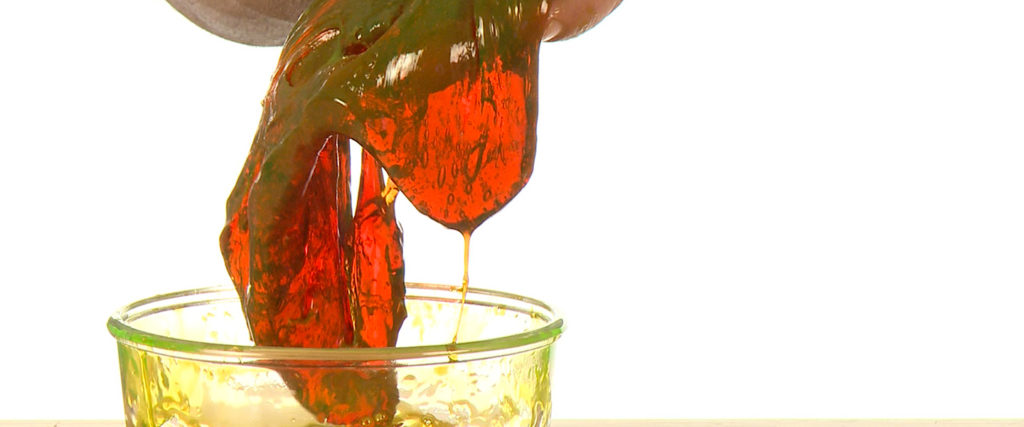
Now it’s ready for you to play! Be sure to wash your hands first so that you don’t get dirt into your brand new slimey toy.
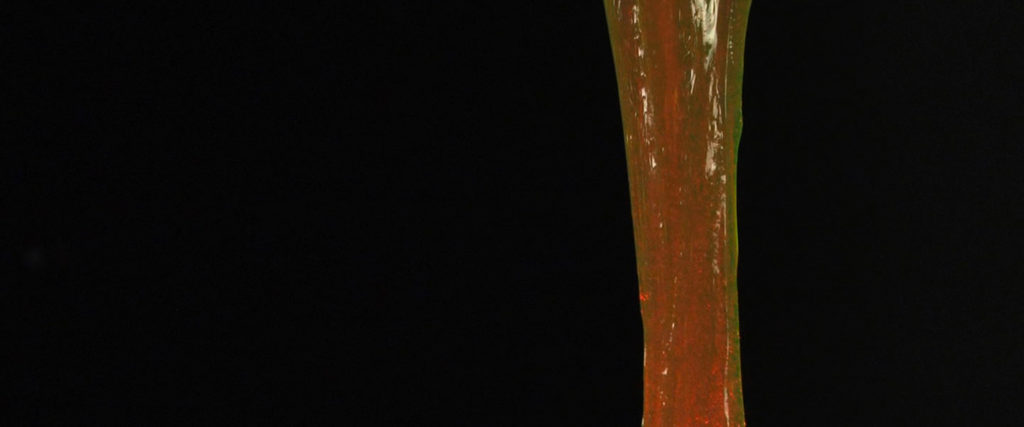
Try turning the lights off and using a flashlight to see the slime – what kinds of color differences do you see?

What if you use a black light to look at the slime in the dark?
Most liquids, such as water, are made up of small, unconnected molecules bouncing around and tumbling over and into one another. These single, unconnected molecules are called monomers. Monomer liquids flow easily and are seldom gooey or sticky to the touch. In other substances, the monomers are linked together in long chains of molecules known as polymers. These long chains don’t flow easily at all. Like a bowl of cooked spaghetti, they sort of roll over and around one another. Liquid polymers tend to be a lot gooier and flow more slowly than liquid monomers. The Vampire Slime Goo, called polyvinyl alcohol (PVA), you used to make slime is a liquid polymer.
PVA is used by the plastics industry to form surface coatings and to make surface films resistant to gasoline. It’s also used to make artificial sponges, hoses, and printing inks. If you check out the ingredients of contact lens wetting solutions, you may find PVA used as a lubricant and a cleanser. The PVA solution in this kit contains fluorescent coloring and a special disinfectant to help resist pesky germs on those not-so-clean hands.
The Cross-Linker Solution is called sodium tetraborate. The common household name for this chemical is Borax. Your parents or grandparents will recognize the name Borax as a unique brand of powdered soap used to whiten linen and to really clean your hands. The Borax or sodium tetraborate molecules act to “cross-link” the long strands of PVA molecules. Just imagine a box full of tiny, steel chains that slip and slide easily across one another. Each chain is made up of hundreds of individual links but one chain is not connected to another chain. Borax loves to connect with water and billions of Borax molecules randomly link trillions of water molecules found anywhere on the chains of PVA. Now when you pull out one PVA chain, all the rest comes with it in a blob.
Vampire Slime appears green at most angles, but light passing directly through the vein appears red. The secret is a special combination of dyes (fluorescein and bromophenol blue) that reflect green when light hits it and absorbs all wavelengths of light except for red as light passes through it.